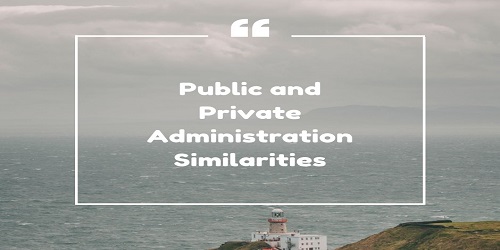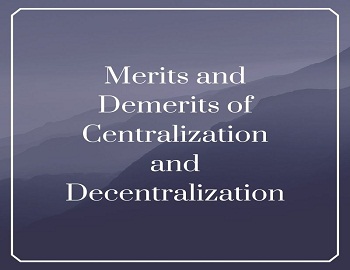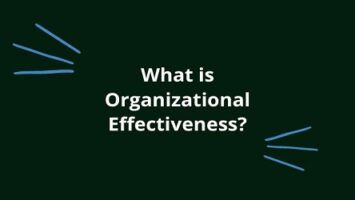Public and Private Administration Similarities:
The distinction between public and private administration is not absolute. There are many similarities between the working and organization of the two. A very large number of the techniques of management and organization are common to both. That is why Henry Fayol, L. Urwick, and several other scholars are of the view that all administration is one. Henry Fayol says, “Public and Private Administration requires planning, organization, command, coordination and control and in order to function properly both must observe the same general principles.” He further says, “We are no longer confronted with several administrative sciences but with one which can be applied equally well to public and private affairs.”
Likewise, L. Urwick also writes, “The attempt to sub-divide the study of management or administration in accordance with the purposes or particular forms of undertakings seems to many authorities equally misdirected. They have much in common. Many of the POSDCORB techniques are common to both. Prof. Pfiffner and Presthus seem to agree with this view of the close relationship between Public and Private Administrations when they observe, “The elements of organization, process, and attitude appear in both the private corporation and government bureaucracy.”
There are a number of similarities between Public and Private Administrations. Both are guided and regulated by certain common principles, rules, and regulations. Both employ modern methods for increasing efficiency.
E. W. Fellows lists the following three major similarities between Private and Public Administration:
- Both have a similar bureaucratic structure.
- Both have union activities in their organization.
- Both are governed under employment legislation.
Besides this, we can refer to other similarities between the two as under:
(1) Efficient and Prompt Service- Public and Private Administration are deeply interested, and moreover, are bound to be efficient and quick in their dealings with other persons with whom they are required to come into contact. Both are governed by the objective of rendering efficient and prompt service to the people.
(2) Public Dealings- Both realize that there should be maximum contact with the people. If these contacts are lost, the administration is bound to be a failure because it would not know the needs and necessities of the masses whom it is required to serve. The development of continuous, cordial, and harmonious relations with the people constitutes a meeting place for public and private administration.
(3) Hierarchical Organization- Both have a hierarchical setup. Both have employees of different statuses and both have a clear demarcation of duties and work. In both these sections, there are some individuals who are to formulate the policies of the organization and there are others who are responsible for the implementation of the policies of the organization.
(4) Scope for Improvement- Both Public and Private Administrations feel that there is adequate scope for improvement in their fields. Both try to grow with time.
(5) Similar Working Conditions- Both Public and Private Administrations realize that it is very essential to provide their staff with good working conditions and security of service. Both feel that unless their staff is provided with good working conditions, they will not work with confidence.
(6) Similar Set of Rules- Both are supposed to work in accordance with some set of rules or standards. The person serving in public or private administration has to follow rules, regulations, and a defined routine. Both involve organized efforts for securing their respective objectives. Both are to see that the welfare of the staff is not ignored. Moreover, both are to see that staff is recruited, promoted, and retired timely.
(7) Common Skills- In both, numerous skills required for the running of an administration are similar e.g., clerical, accounting, and managerial skills.
(8) Common Managerial Techniques- Managerial techniques are common to both Public and Private Administrations. POSDCORB activities characterize both.
On the basis of these similarities, several scholars prefer to agree with the view that all administration is one and there is little difference between Public and Private Administrations. The exchange of personnel from Public to Private Administration and vice-versa reflects fully the nearness of the two.









Comments (No)